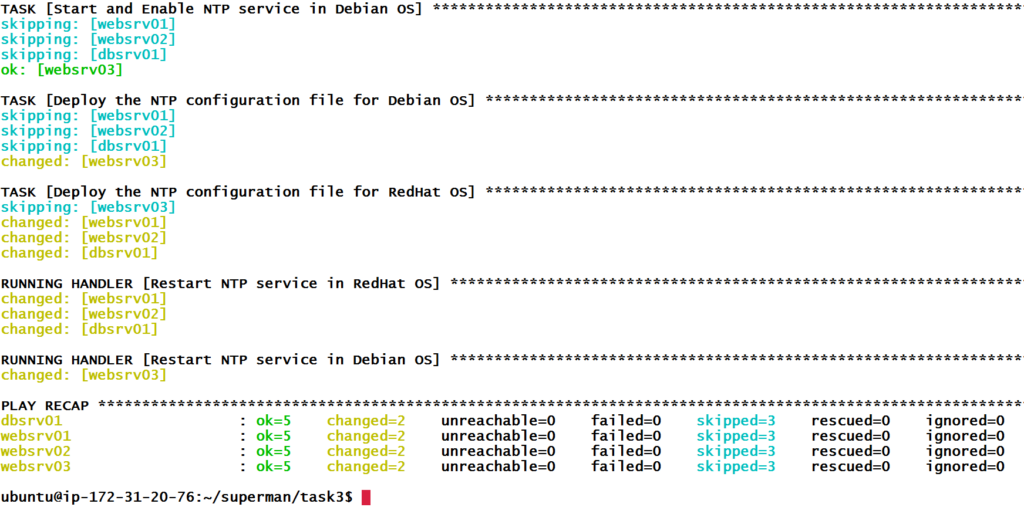In the previous article, we created locally NTP configuration files for Debian and RedHat OS based servers and there, we updated the NTP related lines as seen below.

Now, suppose if we have multiple data centers in different geo locations, then we could have different values for the NTP servers and this could also change on different environments and in that case, we will have to keep changing the values for different environments or projects.
So how to put variables in file. The solution is TEMPLATES.
A template in Ansible is a file which contains all your configuration parameters, but the dynamic values are given as variables.
As of now, we have the below directory structure.

Now, let’s create a directory named templates.
mkdir templatesAnd, copy the conf files from files folder to the templates folder and rename the files with the j2 extension.
cp -r files/* templates/
mv templates/ntp_debian.conf templates/ntp_debian.j2
mv templates/ntp_redhat.conf templates/ntp_redhat.j2 Next, we will open the ntp_debian.j2 file and will add the variables .


Similarly we will do it for redhat system as well.
So, by now, we have defined the variables in the config files. We need to define the values of the variables now.
We will create a group_vars directory and will define the values of variables there.
mkdir group_vars
vim group_vars/all ntp0: '0.in.pool.ntp.org'
ntp1: '1.in.pool.ntp.org'
ntp2: '2.in.pool.ntp.org'
ntp3: '3.in.pool.ntp.org' Next, we need to update the tasks in playbook ntp_playbook.yml and will replace the copy module with template module.
The main difference between copy module and template module is copy module simply copies the file from source and push it to the destination whereas template module is smart, and it checks for the template file and then see if it contains variables, gets the values of those variables, replace the value and then push it to the destination.
Below is the updated playbook code
---
- name: Deploying NTP Service
hosts: all
become: yes
tasks:
- name: Install packages on RedHat OS
yum:
name: "{{item}}"
state: present
loop:
- ntp
- unzip
- git
- wget
- zip
when: ansible_os_family == "RedHat"
- name: Install packages on Debian OS
apt:
name: "{{item}}"
state: present
loop:
- ntp
- unzip
- git
- wget
- zip
when: ansible_os_family == "Debian"
- name: Start and Enable NTP service in RedHat OS
service:
name: ntpd
state: started
enabled: yes
when: ansible_os_family == "RedHat"
- name: Start and Enable NTP service in Debian OS
service:
name: ntp
state: started
enabled: yes
when: ansible_os_family == "Debian"
- name: Deploy the NTP configuration file for Debian OS
template:
src: templates/ntp_debian.j2
dest: /etc/ntp.conf
backup: yes
when: ansible_os_family == "Debian"
notify:
- Restart NTP service in Debian OS
- name: Deploy the NTP configuration file for RedHat OS
template:
src: templates/ntp_redhat.j2
dest: /etc/ntp.conf
backup: yes
when: ansible_os_family == "RedHat"
notify:
- Restart NTP service in RedHat OS
handlers:
- name: Restart NTP service in RedHat OS
service:
name: ntpd
state: restarted
when: ansible_os_family == "RedHat"
- name: Restart NTP service in Debian OS
service:
name: ntp
state: restarted
when: ansible_os_family == "Debian"

We can see that new NTP configurations have been pushed and our handlers also got executed.